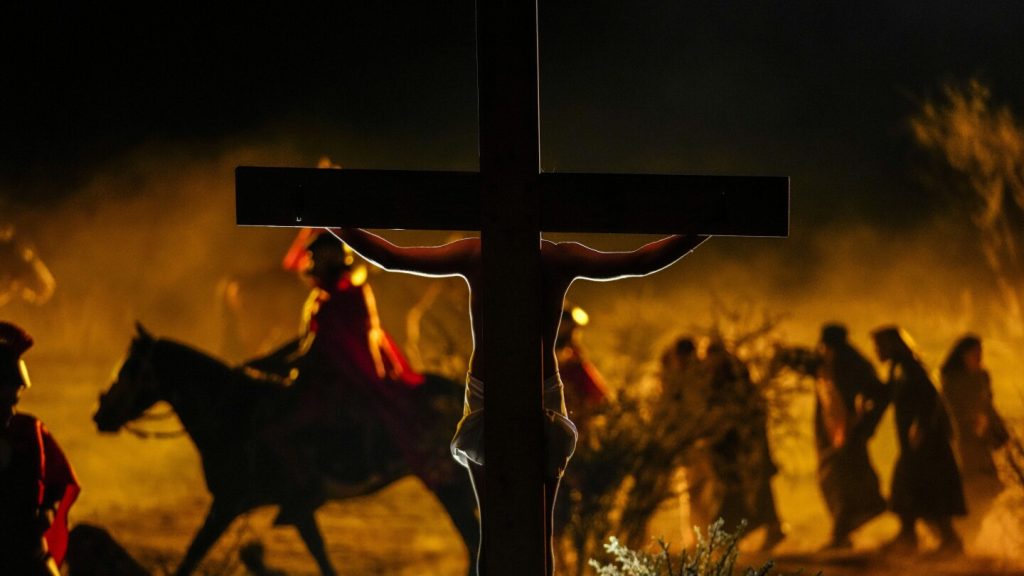Catholic faithful in Latin America marked Good Friday with solemn processions and reenactments of the crucifixion of Jesus. In Antigua, Guatemala, devotees carried a three-ton religious float with a 300-year-old statue of Jesus bearing the cross. In Brazil, residents of the Complexo do Alemao favela watched a Way of the Cross reenactment. In Caracas, Venezuela, men dressed as Roman soldiers tied others to crosses on a hill overlooking the Petare neighborhood, drawing spectators to witness the dramatic reenactment.
In Ecuador, thousands of penitents accompanied a statue of Jesus in a march through the capital, while Cuba marked Good Friday with a procession in Havana. In Quito, Ecuador, penitents flogged themselves and carried flowers during the Jesus the Almighty Good Friday procession. In other parts of Latin America, such as Colombia, Paraguay, and Chile, local communities participated in reenactments of the crucifixion and other scenes from the Passion of Christ. These events, which attract both participants and spectators, are deeply ingrained in the religious and cultural fabric of these societies.
The reenactments often involve detailed costumes, props, and elaborate floats, showcasing the dedication and attention to detail put into honoring Good Friday. In Zipaquira, Colombia, a member of the Nazarene brotherhood carried a crown of thorns on a decorative pillow during a Holy Week procession. In Rio de Janeiro, Brazil, a man playing the role of Jesus Christ was whipped by a Roman soldier during a Way of the Cross reenactment. The visual spectacle of these events, along with the emotional intensity of the performances, creates a profound and moving experience for participants and observers alike.
Participants in these Good Friday processions demonstrate their faith and devotion through acts of penance and reenactments of Jesus’ suffering and sacrifice. In Paraguay, a man playing the role of Jesus Christ hung on a cross during a Way of the Cross reenactment in Atyra. In Venezuela, penitents hung on crosses in the Petare neighborhood as part of a dramatic reenactment. The physical and emotional toll taken by these participants underscores the seriousness and solemnity with which they approach these religious observances, reflecting the gravity of the occasion.
For many communities in Latin America, these Good Friday processions and reenactments are not just religious rituals but also cultural traditions that have been passed down through generations. Families and communities come together to participate in or witness these events, creating a sense of unity and shared experience. The images of cucuruchos carrying religious floats, penitents flogging themselves, and actors reenacting scenes from the Passion of Christ evoke a powerful connection to the story of Jesus’ crucifixion and resurrection, reminding participants of the central tenets of their faith.
As the sun sets on Good Friday in Latin America, the echoes of the day’s processions and reenactments linger in the air, leaving a powerful impression on those who took part and those who witnessed the events. The ceremonies and rituals of this day serve as a reminder of the core beliefs of the Catholic faith and the sacrifices made by Jesus for humanity. Through these solemn observances, Latin American communities reaffirm their faith, express their devotion, and come together in shared reverence for the central figure of their religion.


